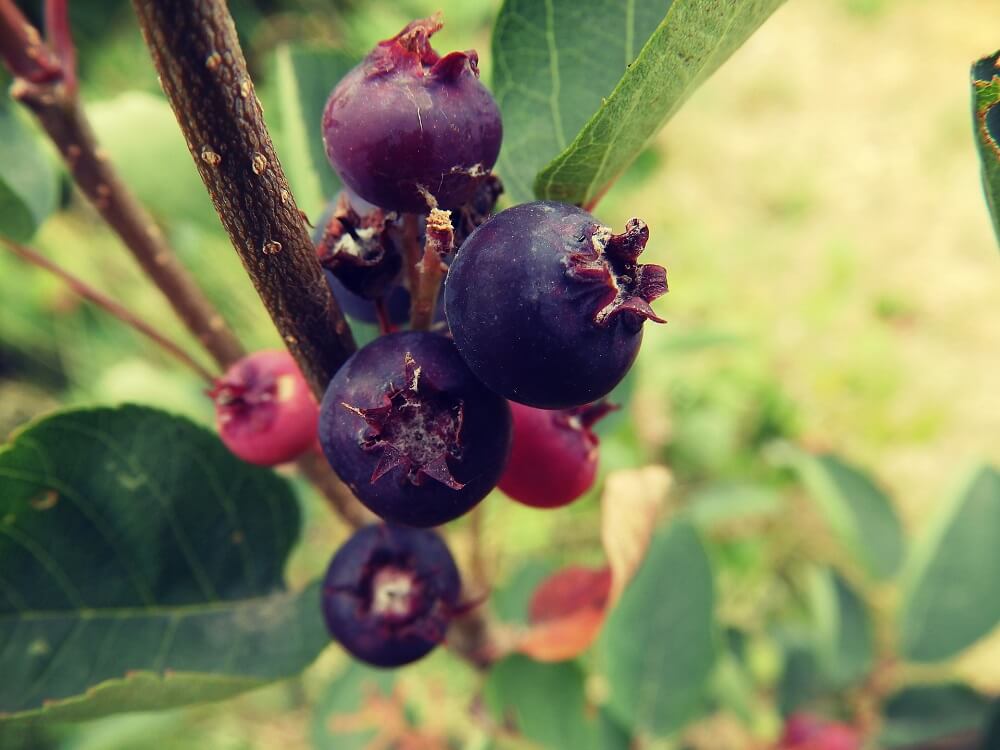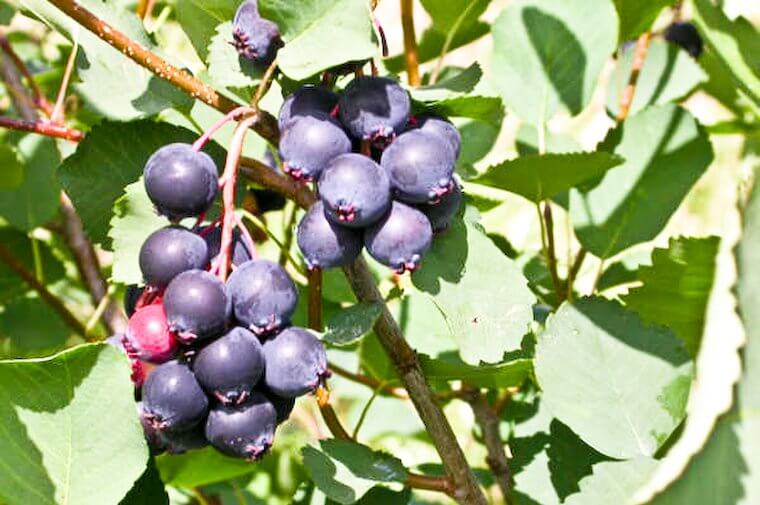Thanks to the possibility to extract the basal shoots from the main material, starting early spring, we are able to produce juneberry seedlings in the process of vegetative reproduction. Vegetative reproduction is not an easy process-however thanks to the modern gardening tunnels that we use, we are able to step up to the challenge.
We offer juneberry seedlings with just a root, which we sell both as annual and biennial plants, as well as potted seedlings. The potted seedlings are available in the followings forms: P9- annual and C1,5- biennials. Each of them is equipped with a well developed root system and proper branching. Additionally all stems are trimmed right before transportation- just to make your life easier!

The total price of juneberry seedlings depends mostly on the variety, the age and of course the amount ordered. All large orders are up for negotiation. Rest assured- all our clients receive professional advice along the way.
Juneberry types
| Nazwa | Pora dojrzewania | Plenność | Odporność na mróz | Odporność na choroby | Odmiana | Owoce |
| Northline | medium | very high | high | relatively high | for processing, for desserts | large, sweet, intensive taste |
| Smoky | medium | very high | high | relatively high | for processing, for desserts | relatively large, sweet but mellow |
| Thiessen | early | very high | high | relatively high | for processing, for desserts | very large, tart, juicy, tasty |
1. Northline
This juneberry type will bear fruit for even up to 50 years from the first fruiting. It was created in 1958 but it has not started being widely cultivated before 1976.
The Northline juneberry is very popular among growers.
The shrub is strong, with thick, tight branching, it can grow up to 400 m. The berries are delicious, very intensive and sweet in taste. The flesh is soft and the shape of the berries is rather round- they resemble blackcurrants or black chokeberries. The fruit ripens on the cusp of June and July. The fruit picking is quite complex: if the berries are meant for processing- they need to be picked sooner, when they start ripening and are full of pectin. If they are meant to be eaten fresh or for dessert production, they should be picked a bit later. Late harvest increases the time of sugar accumulation in the fruit.
2. Smoky
The Smoky juneberry is an alder-leaved shadbush and can bear fruit for up to 70 years which makes it a long- living plant. The plant grows wild and was discovered in the watershed of Smoky river in Canada, which is where its name originates. Juneberry used to be incredibly popular in Canada in the 90s. The Smoky variety grows very strong, the shrub is usually straight but with time, it tends to branch out. The shrub can grow up to 450 cm in height and 600 cm in diameter. The berries are usually large, dark blue to black, which makes them very appealing. The peel is covered with a waxy residue. The fruit grows in bunches: usually 8- 10 berries per bunch. The taste is very mellow, delicate, but also very sweet which is precisely what makes the Smoky variety so exceptional. The Smoky juneberry is ready for harvest during medium season. This variety is perfect to be eaten fresh but can be processed as well.
3. Thiessen
Thiessen is an alder-leaved juneberry and was introduced to the market in the year 1976; it was created in the area of the North Saskatchewan River (Canada). Thiessen is very popular among growers since it is quite easy to cultivate. The Thiessen shrub tends to grow strong, up to 450 cm in height and its overall shape is tight. The fruit of the Thiessen juneberry is exceptionally large and blueish- black, covered with a thin layer of wax residue. The taste is quite distinctive: tart and sweet which definitely makes Thiessen stand out. It is recommended to pick Thiessen by hand since the ripening process is uneven. This variety is usually ready for harvest towards the end of June. An early harvest is recommended when the fruit is meant for processing. If the fruit is meant to be consumed fresh, the best time for harvest would be slightly later. Waiting a bit longer pays off- the berries have enough time to accumulate more sugar and will simply taste sweeter. The real Art here is to find just the right time because if we wait too long, Thiessen berries will turn soft and may lose their exceptional taste.
Morphology of the juneberry
Amelanchier is the original name of the juneberry/ wild plum and the plant belongs to the Rosaceae family. It may take shape of a shrub or a small tree and grow to anywhere from 20 cm up to 2 m which is needless to say, quite a range. In nature, juneberries are usually to be found growing in wide- ranging, tight clusters. The bark is greyish- brown, featuring dark brown blotches. Early on, the bark is usually smooth to the touch but with each year, it becomes more and more porous, cracked and uneven. The wood itself is quite heavy and hard, with reddish brown hardwood. Some of the varieties are long- living and can last up to 70 years. The juneberry leaves
Are relatively simple looking: elliptic, oval, very thin, medium or medium- large in size, with regular leaf vasculature. In the fall, juneberry leaves have some spectacular colors which is why the plant is often times grown solely for the decorative effects. The flowers grow clustered in an inflorescence which may consist of only 1 or up to 20 single, very fragile flowers with 5 petals each. The color of the flowers is either white or light pink. Juneberry blooms on the cusp of March and April. The berries are a so- called accessory fruit, just like the North American high bush blueberry. The color of the berries starts out as red and than changes into dark purple, almost black; the color changes during ripening. Juneberries are an excellent source of calcium and iron. The size of each berry is roughly 1,5 cm. They are very sweet and the ideal time for harvest is summer time.
